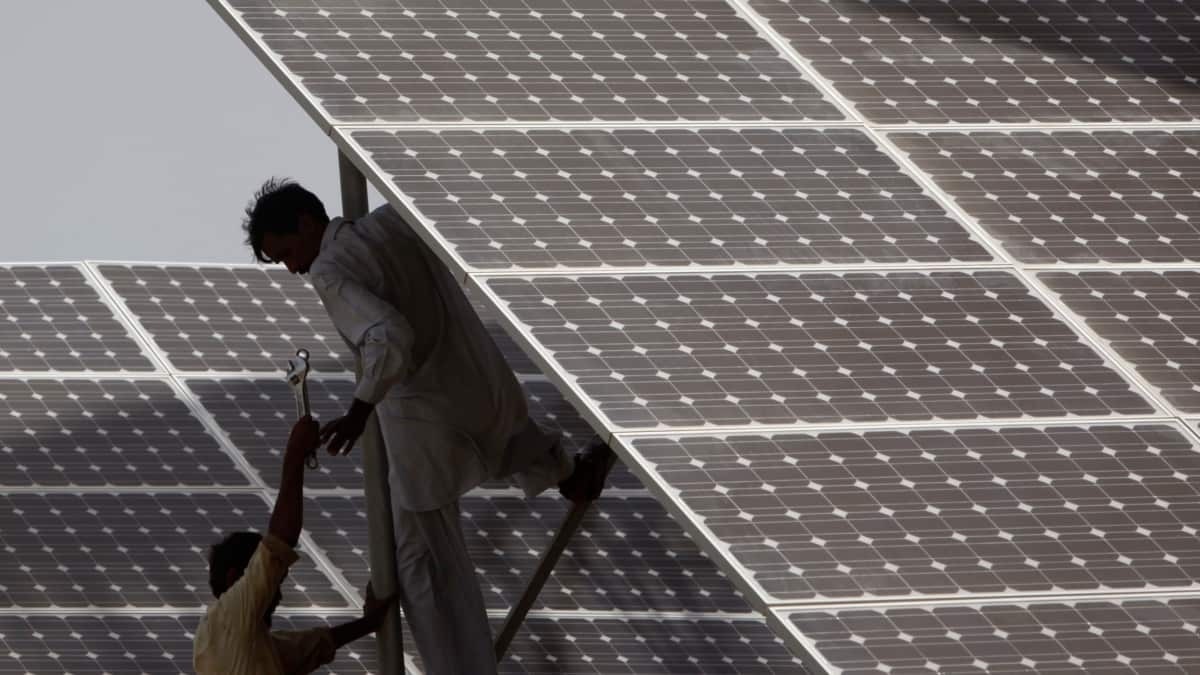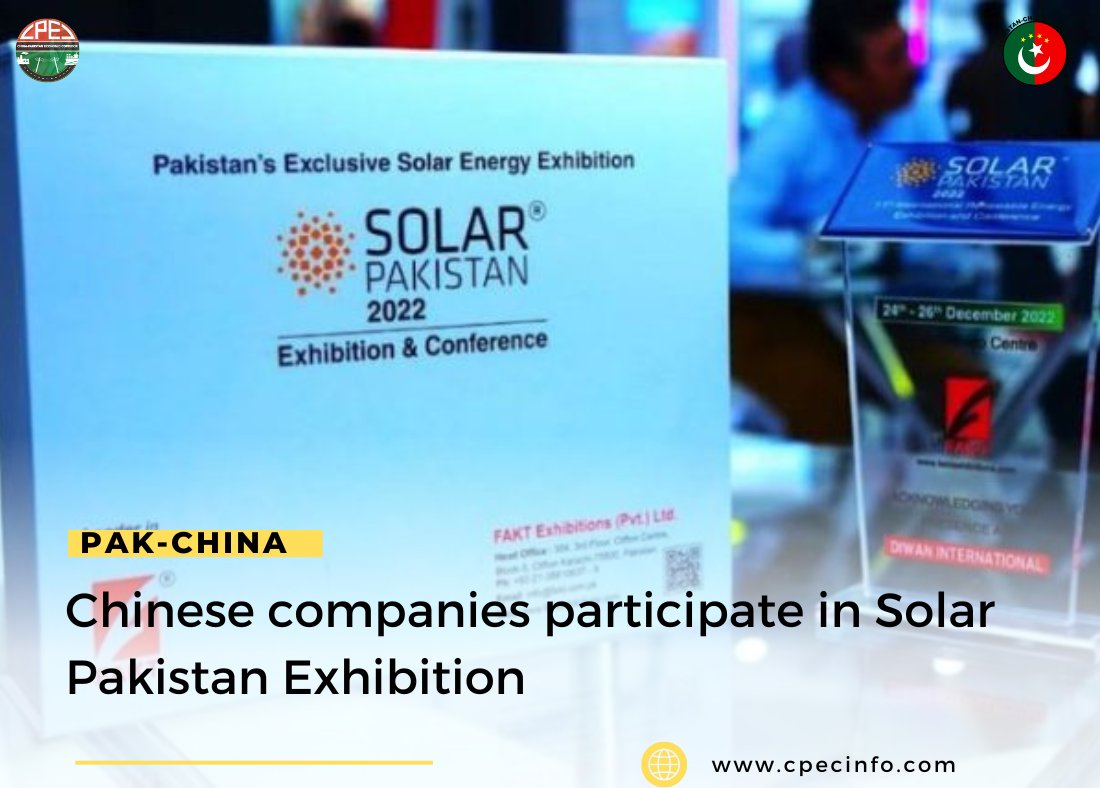ghazi52
PDF THINK TANK: ANALYST

- Joined
- Mar 21, 2007
- Messages
- 103,032
- Reaction score
- 106
- Country
- Location
,.,.,.,
July 23, 2022

With government tax incentives and reducing solar costs and finance programmes, it is easier than ever to go solar and recoup the costs of your system in a matter of 3-5 years, in most cases.
There are financing packages available that have zero upfront costs leading to a dramatically cheaper monthly energy bill and a much cleaner carbon footprint.
In summers when air conditioning is a necessity, harvesting our most abundant natural resource becomes essential as the costs of buying power from utilities is skyrocketing, a warrantied life of 25 years and effective life of 40-50, solar panels lock in predictable energy costs for decades, while freeing from utility uncertainty.
In 2006, the government introduced a policy for the development of renewable energy for power generation employing small hydro, wind, and solar technologies. The policy was introduced based on abundant renewable energy potential of Pakistan.
Renewable Energy Policy permits to generate electricity based on renewable resources at one location and receive an equivalent amount for own use elsewhere on the grid at the own cost of generation plus transmission charges i.e. wheeling. It allows net metering and billing so that a producer can sell surplus electricity at one time and receive electricity from the grid at another time and settle accounts on net basis making it a win-win situation for all.
This directly benefits the economics of small scale, dispersed generation and optimizes capacity utilization of installed systems. It facilitates projects to obtain carbon credits for avoided greenhouse gas emissions, helping improve financial returns and reducing per unit costs.
The impetus was to go a long way in strengthening and improving the power supply position of the country and help reduce reliance on fossil and imported fuel and enhance environmentally sustainable economic growth.
However, in a decade's time, widespread implementation of distributed generation mainly solar was confined to large businesses and industries only, whereas small and medium enterprises, commercial sector, agriculture and residential consumers were unable to reap the benefits of solar due to high cost and non-availability of financing options.
In 2016, the State Bank of Pakistan introduced financing scheme for Renewable Energy, the purpose was to provide concessionary financing for small scale renewable energy solutions to large renewable energy power projects as well. The scheme offers financing at 6% to kickstart installation of renewable energy-based solutions under net metering system introduced by National Electric Power Regulatory Authority (NEPRA) as per Net Metering Regulation 2015. The scheme is available for power generation using renewable energy sources i.e. solar, wind, hydro, biogas, bio-fuels, bagasse cogeneration, and geothermal as fuel.
The scheme facilitated in the mass deployment of solar solutions by all segments of strata and benefits such as lower electric bills, reduced exposure to future electricity prices, possible increased property value, reduced carbon footprint, increased reliability and cheaper alternate supply of power were secured by all. Solar panels are also exempted from general sales tax and any custom duty, thereby making this investment even more compelling today.
Advances in new materials, designs for photovoltaic panels and introduction of newer technologies, cost of solar solutions have reduced multiple folds in past two decades which was earlier biggest impediment and masses refrained to investment due to high CAPEX.
In spite of the fact the industrial tariff is subsidized and residential is not, the benefit of solar by residential consumers were untapped and fallow. The residential base tariff is approx. Rs.22/KWh + taxes which is 40% higher than industrial, therefore, the payback for residential installed renewable energy is within 3-5 years there after the customers can enjoy free electricity for the life of the project. If a residential customer with a sanctioned load of 5KW and above installs grid tied solar solution of 5KW. The average household of 5 people with consumption of 15-20 KWh can get complete energy through solar during the day and sell excess power to the grid and can reduce your electricity bill to net zero.
The technical advances combined with changing consumer needs have opened numerous opportunities in the reach of consumers to use distributed generation mainly solar to meet their own energy needs. It is imperative that all efforts are made to make distributed generation, energy efficient, reliable, clean, and affordable.
The aim is to accelerate the pace of development, deployment, and implementation of small-scale solar energy systems, and promote greater energy security, economic competitiveness, and environmental protection. With small little efforts in personal capacities, can lessen the burden on National Exchequer, WAPDA and NEPRA where large scale installation of energy intensive projects may be long-term, high in investment, require greater infrastructure implementation and require power system upgradation. In these trying times, let’s take advantage of this opportunity, electrify investment and power up our houses.
Going solar: the need of the hour
Mohammad WahidJuly 23, 2022

With government tax incentives and reducing solar costs and finance programmes, it is easier than ever to go solar and recoup the costs of your system in a matter of 3-5 years, in most cases.
There are financing packages available that have zero upfront costs leading to a dramatically cheaper monthly energy bill and a much cleaner carbon footprint.
In summers when air conditioning is a necessity, harvesting our most abundant natural resource becomes essential as the costs of buying power from utilities is skyrocketing, a warrantied life of 25 years and effective life of 40-50, solar panels lock in predictable energy costs for decades, while freeing from utility uncertainty.
In 2006, the government introduced a policy for the development of renewable energy for power generation employing small hydro, wind, and solar technologies. The policy was introduced based on abundant renewable energy potential of Pakistan.
Renewable Energy Policy permits to generate electricity based on renewable resources at one location and receive an equivalent amount for own use elsewhere on the grid at the own cost of generation plus transmission charges i.e. wheeling. It allows net metering and billing so that a producer can sell surplus electricity at one time and receive electricity from the grid at another time and settle accounts on net basis making it a win-win situation for all.
This directly benefits the economics of small scale, dispersed generation and optimizes capacity utilization of installed systems. It facilitates projects to obtain carbon credits for avoided greenhouse gas emissions, helping improve financial returns and reducing per unit costs.
The impetus was to go a long way in strengthening and improving the power supply position of the country and help reduce reliance on fossil and imported fuel and enhance environmentally sustainable economic growth.
However, in a decade's time, widespread implementation of distributed generation mainly solar was confined to large businesses and industries only, whereas small and medium enterprises, commercial sector, agriculture and residential consumers were unable to reap the benefits of solar due to high cost and non-availability of financing options.
In 2016, the State Bank of Pakistan introduced financing scheme for Renewable Energy, the purpose was to provide concessionary financing for small scale renewable energy solutions to large renewable energy power projects as well. The scheme offers financing at 6% to kickstart installation of renewable energy-based solutions under net metering system introduced by National Electric Power Regulatory Authority (NEPRA) as per Net Metering Regulation 2015. The scheme is available for power generation using renewable energy sources i.e. solar, wind, hydro, biogas, bio-fuels, bagasse cogeneration, and geothermal as fuel.
The scheme facilitated in the mass deployment of solar solutions by all segments of strata and benefits such as lower electric bills, reduced exposure to future electricity prices, possible increased property value, reduced carbon footprint, increased reliability and cheaper alternate supply of power were secured by all. Solar panels are also exempted from general sales tax and any custom duty, thereby making this investment even more compelling today.
Advances in new materials, designs for photovoltaic panels and introduction of newer technologies, cost of solar solutions have reduced multiple folds in past two decades which was earlier biggest impediment and masses refrained to investment due to high CAPEX.
In spite of the fact the industrial tariff is subsidized and residential is not, the benefit of solar by residential consumers were untapped and fallow. The residential base tariff is approx. Rs.22/KWh + taxes which is 40% higher than industrial, therefore, the payback for residential installed renewable energy is within 3-5 years there after the customers can enjoy free electricity for the life of the project. If a residential customer with a sanctioned load of 5KW and above installs grid tied solar solution of 5KW. The average household of 5 people with consumption of 15-20 KWh can get complete energy through solar during the day and sell excess power to the grid and can reduce your electricity bill to net zero.
The technical advances combined with changing consumer needs have opened numerous opportunities in the reach of consumers to use distributed generation mainly solar to meet their own energy needs. It is imperative that all efforts are made to make distributed generation, energy efficient, reliable, clean, and affordable.
The aim is to accelerate the pace of development, deployment, and implementation of small-scale solar energy systems, and promote greater energy security, economic competitiveness, and environmental protection. With small little efforts in personal capacities, can lessen the burden on National Exchequer, WAPDA and NEPRA where large scale installation of energy intensive projects may be long-term, high in investment, require greater infrastructure implementation and require power system upgradation. In these trying times, let’s take advantage of this opportunity, electrify investment and power up our houses.








